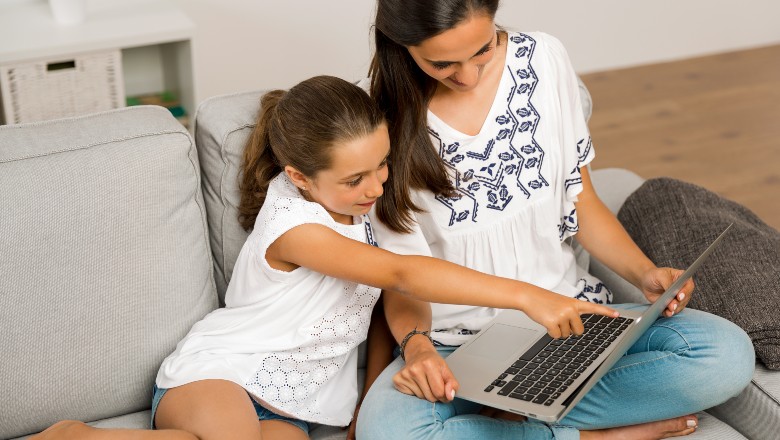
Looking to help your child with schoolwork when they’re off school? You won’t go wrong with this expert guide to the best Chromebooks for kids.
And if you’re after even more inspiration or advice for things to keep the kids busy while they’re at home, we’ve previously counted down the Best Phones for Kids, too!
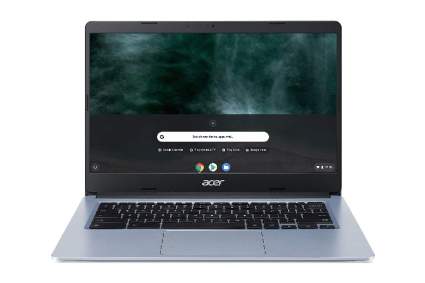
|
Amazon Customer Reviews
|
Price: $195.99 Shop at Amazon | Shop now Read our review |
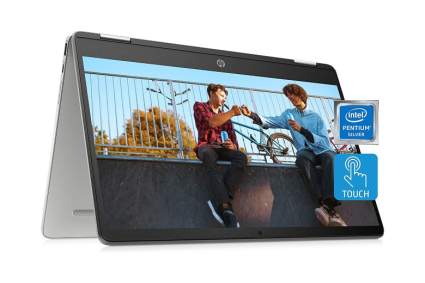
|
Amazon Customer Reviews
|
Price: $278.00 Shop at Amazon | Shop now Read our review |
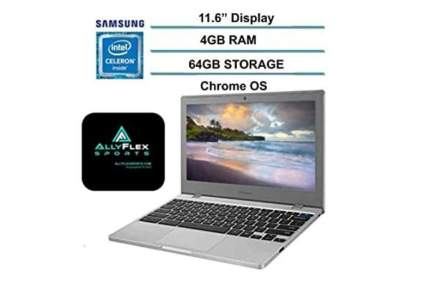
|
Amazon Customer Reviews
|
Price: $369.00 Shop at Amazon | Shop now Read our review |
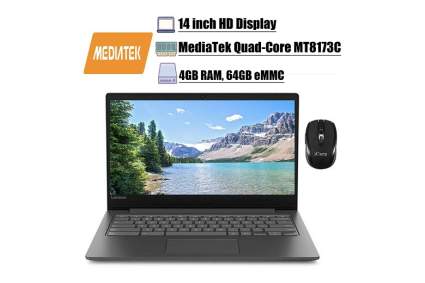
|
Amazon Customer Reviews
|
Price: $379.00 Shop at Amazon | Shop now Read our review |
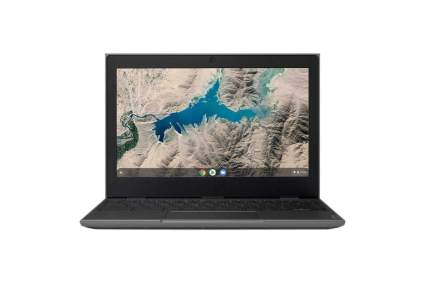
|
Amazon Customer Reviews
|
Price: $288.00 Shop at Amazon | Shop now Read our review |
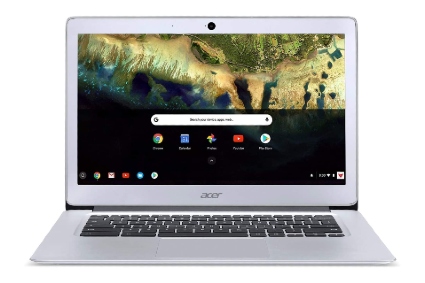
|
Amazon Customer Reviews
|
Price: $250.00 Shop at Amazon | Shop now Read our review |
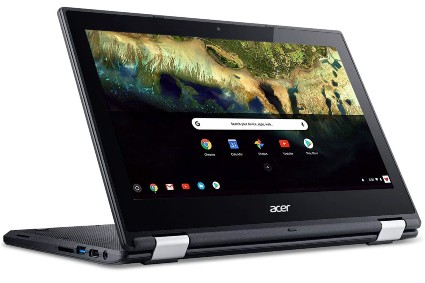
|
Amazon Customer Reviews
|
Price: $228.58 Shop at Amazon | Shop now Read our review |
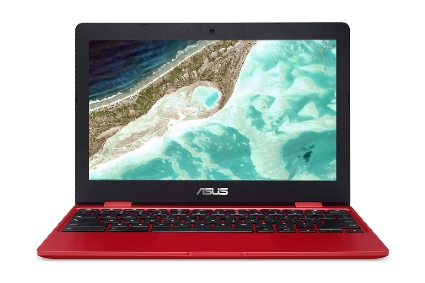
|
Amazon Customer Reviews
|
Price: $249.99 Shop at Amazon | Shop now Read our review |
|
|
Amazon Customer Reviews
|
Price: $999.97 Shop at Amazon | Shop now Read our review |
|
|
Amazon Customer Reviews
|
Price: $1,999.99 Shop at Amazon | Shop now Read our review |

|
Amazon Customer Reviews
|
Price: $999.99 Shop at Amazon | Shop now Read our review |
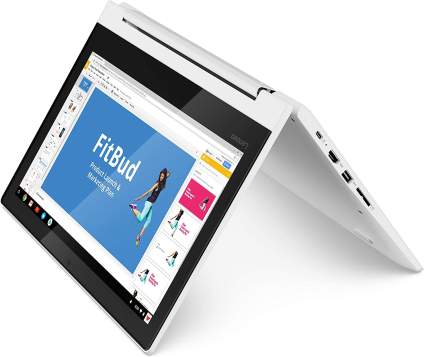
|
Amazon Customer Reviews
|
Price: $309.00 Shop at Amazon | Shop now Read our review |
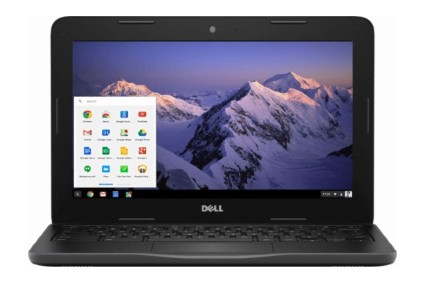
|
Amazon Customer Reviews
|
Price: $304.99 Shop at Amazon | Shop now Read our review |

|
Amazon Customer Reviews
|
Price: $539.99 Shop at Amazon | Shop now Read our review |
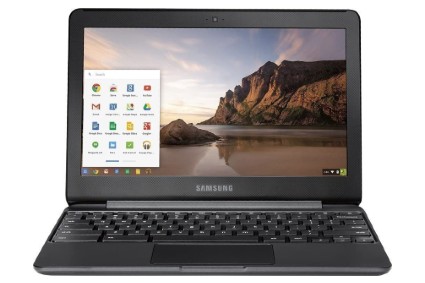
|
Amazon Customer Reviews
|
Price: $194.97 Shop at Amazon | Shop now Read our review |
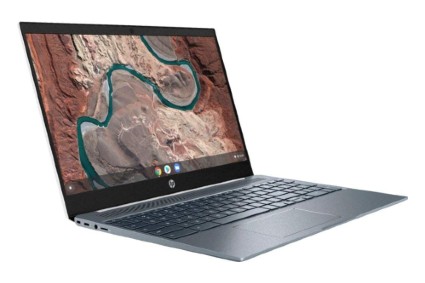
|
Amazon Customer Reviews
|
Price: $508.87 Shop at Amazon | Shop now Read our review |
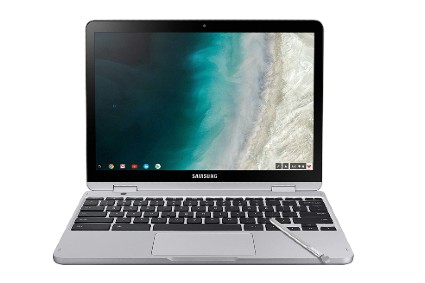
|
Amazon Customer Reviews
|
Price: $395.00 Shop at Amazon | Shop now Read our review |
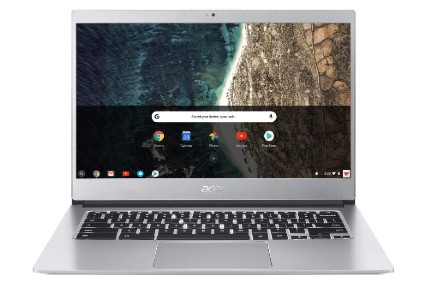
|
Amazon Customer Reviews
|
Price: $335.11 Shop at Amazon | Shop now Read our review |

|
Amazon Customer Reviews
|
Price: $79.00 Shop at Amazon | Shop now Read our review |
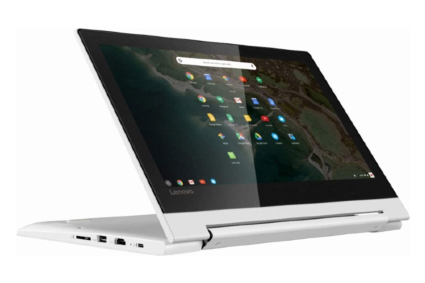
|
Amazon Customer Reviews
|
Price: $297.00 Shop at Amazon | Shop now Read our review |
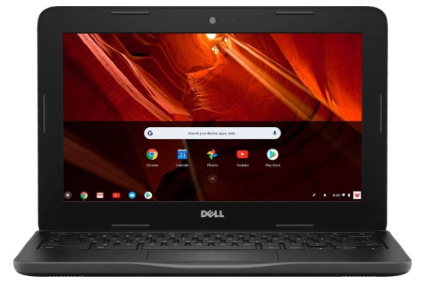
|
Amazon Customer Reviews
|
Price: $459.00 Shop at Amazon | Shop now Read our review |
-
1. Acer Chromebook 314 | Our Personal Pick
Pros:- Modern tech
- Fast
- Great for music, vidoes, reading online, and schoolwork
- Massive, crisp screen
- Loads of storage space
Cons:- Screen may be too big for some
- Plastic case is okay
- USB charger needs to be on the back, not both sides
Processor Intel Celeron N4000 | RAM 4GB LPDDR4 | Screen Size 14-inches | Hard Drive 64GB eMMC |
I upgraded to the Acer Chromebook 314 recently and I haven’t looked back. It’s fast, offers up plenty of storage, and has a killer screen.
Of course, not everyone needs a 14-inch screen, but given how crisp this thing is, I’d definitely recommend it. Being able to drag and drop different windows to different areas of the screen is a godsend when you’re working. As is being able to have different ‘desks’ (different windows with programs running in).
On the power side of things, everything sounds pretty basic, but that’s not entirely true. We’ve got more recent models when it comes to RAM and the processor, which makes it run faster than, say, a Chromebook working with LPDDR3 RAM or a lesser processor. It feels fast, and I’d wager it’s more than enough for people who want to write, watch videos, surf the Internet, or for moderate gaming.
Finally, and this is important, despite being released in mid 2020, this is one very affordable Chromebook given it’s power and more modern tech.
-
2. HP Chromebook x360
Pros:- Doubles as a tablet and a laptop
- Good amount of power
- 12-hour battery life
Cons:- Tablet function means it won't just be for work
- Costs a little extra
- Odd speaker placement
Processor Intel Pentium Silver N5000 | RAM 4GB | Screen Size 14-inches | Hard Drive 64GB eMMC |
Why just use a Chromebook for work when you can use it as a tablet as well?
That’s where the HP Chromebook x360 comes in. Thanks to the touchscreen functionality and swivel hinge, this Chromebook can fold back to turn it into a tablet or pop-up TV.
It’s also a really long-lasting Chromebook. Specially, you’re looking up to 12 hours on a full charge. That’s pretty much all-day uptime. Not bad, eh?
In the power department, this thing rocks the Intel Pentium Silver N5000 married to 4GB of RAM with a massive 64GB of storage. That is more than enough space for music, work, and a few games. If you’re thinking schoolwork, they won’t be able to fill this with documents without some serious effort.
-
3. Samsung Chromebook 4 – 2020 Model
Pros:- Anti-glare screen
- Loads of HDD space
- Modern tech
Cons:- Slightly more expensive. Only slightly, though.
- Screen is a great size, but not the largest on here
- Very little to find fault with
Processor Intel Celeron N4000 | RAM 4GB LPDDR3 | Screen Size 11.6-inches | Hard Drive 64GB eMMC |
The 2020 version of the Samsung Chromebook 4 packs in more modern tech, which in the world of Chromebooks is the difference between fast and really fast.
The first big selling point is the anti-reflective screen. As someone who spends at least eight hours each day working on a Chromebook, I cannot understate how important anti-glare features are. I also wear glasses, so it’s not like I can slap a pair of anti-glare specs over the top. If it’s for homework, depending on their age and how long homework takes, you may be able to do without this feature.
If they’re in their teens, though, I’d absolutely recommend considering it.
Moving on, and into the power department, we’ve got the Intel Celeron N4000, which released in the tail end of 2017 and is still considered a solid processor. As for the RAM, 4GB is the magic number. More is better, but for work, 4GB is more than enough.
Again, I’m speaking from experience here. 4GB is enough for me to run Chrome, MS Word, YouTube, and of course the most important app for work, Spotify.
In a twist I wasn’t expecting, the hard drive is double the industry standard of 32GB, coming in at a meaty 64GB.
That is more than enough space for work, and unless kids go app-mad and download everything, the chances of filling that with homework is super low. It’s also worth keeping in mind the more space you have free, the faster the system will run.
Although there are larger screens on this list, 11.6-inches is still a great size. With screens, larger doesn’t always mean better. Larger can make the Chromebook feel bulky or too large to carry around.
All in all, the Samsung Chromebook 4 boasts a lot of power. It is slightly more pricey than some of the others on here, but if you’re after something you won’t need to replace for several years you won’t go wrong.
Plus it’s still miles more affordable when compared to a Windows laptop.
-
4. Lenovo Chromebook S330 – 2020 Model
Pros:- Sleek black design
- Decent processor
- Great hard drive size
- Slightly larger screen
Cons:- 4-in-1 memory card reader isn't needed for everyone
- Decent, not amazing processor
- The wireless mouse is fine
Processor MediaTek MT8173C | RAM 4GB DDR SDRAM | Screen Size 14-inches | Hard Drive 64GB eMMC |
Stylish, sleek, and a killer amount of hard drive space makes up the Lenovo Chromebook S330.
In a rather random twist, this Chromebook boasts a 4-in-1 media reader. Meaning if you’ve got a few memory cards lying around (MMC, SDHC, SDXC, and MMC) they’ll work on here.
I’m not sure how many people still use cards besides micro SD, but hey, if you’ve got a pot somewhere full of these things that feature may come in useful.
On the processor side of things, the MediaTek MT8173C is, very roughly, comparable with the Intel Celeron 3060. What does that mean, exactly? The short version is there are more powerful options out there, but this is still a hardy processor that will get the job done.
Next up, RAM. 4GB is the sweet spot. It’s enough for pretty much everything you’ll need work-wise. The only drawback is when running games. But then Chromebook games compatibility is spotty at the best of times, and chances are you’re not buying a Chromebook for gaming anyway so it’s a moot issue.
As for the hard drive, 64GB is a lush amount. You’ll fit all the apps you need on there and still have space for a handful of songs (though I’d still recommend whacking songs and albums on a memory card).
So, the Lenovo S330 ticks all the boxes. The main difference between this one and the Samsung Chromebook 4, aside from the slightly less powerful processor in the Lenovo, is style. The Samsung 4 looks like a Chromebook whereas Lenovo has gone for a more traditional, Windows-laptop-looking design. It all comes down to which you prefer the look of.
-
5. Lenovo 100E Chromebook
Pros:- Great price
- Good amount of RAM
- Stylish
Cons:- Camera won't be that great
- 16GB means you may need to grab a micro SD card
- Only comes in black
Processor MediaTek MT8173C | RAM 4GB LPDDR3 | Screen Size 11.6-inches | Hard Drive 16GB eMMC |
If you’re after another solid budget option, look no further than the Lenovo 100E Chromebook.
Don’t let the fact this is a budget option put you off. Lenovo has made a name for itself when it comes to lower-priced items with a solid build quality.
In terms of power we’ve got 16GB of storage, so I’d recommend picking up a micro SD card if your child wants to put music on there, along with 4GB of RAM, which is enough to make this thing fly.
It does mention the front-facing camera is 720P, but there’s no mention of how many megapixels that entails. In short, expect the camera to be not that great, although no one buys Chromebooks for cameras anyway so it’s not too much of an issue.
Find more Lenovo 100E Chromebook reviews and information here.
-
6. Acer Chromebook 14
Pros:- Crazy fast (boots up in around five seconds!)
- Affordable
- It's the Chromebook I use (that's how great it is)
Cons:- I'd have liked more color options
- Case gets quite cold in winter due to the all-metal design
- Speakers are good, but not great
Processor Intel Celeron N3160 | RAM 4GB LPDDR3 | Screen Size 14-inches | Hard Drive 32GB eMMC |
Why is the Acer Chromebook 14 one of the best Chromebooks for kids and my personal pick? Easy. It’s literally what I’m using right now to write this.
I got this Chromebook back in 2019 when my pricey Windows laptop died. I didn’t want to spend a bomb on something that’s only okay, and instead, opted for something that’s not only cheaper, it’s also a hell of a lot quicker.
It’s crazy. Low-powered, slow Windows laptops cost more than a super-fast Chromebook. Sure, getting used to ChromeOS takes a few days when you’re used to Windows, but the difference in speed blows you away.
Ever since I jumped to a Chrome-based laptop, I haven’t looked back. For writing, work, minor image design, watching videoes, and playing Candy Crush, Chromebooks are the way to go.
But that’s enough about me and my buying decisions, though, let’s talk power. The 32GB SSD is more than enough for apps, though I’ve also got a 32GB micro SD card plugged in for all my music, and 4GB is the industry standard for affordable Chromebooks. Combined with the SSD, 4GB means this thing will run super fast.
This Chromebook is so fast, in fact, it takes around five seconds to turn it on to load it up fully. How cool is that?
-
7. Acer Chromebook R 11
Pros:- Convertible
- Perfect for both work and fun
- Great SSD size
- Surprisingly solid speakers
Cons:- Pricier than other Chromebooks
- No other color options
- Touchscreen isn't perfect (but isn't bad, either)
Processor Intel Celeron N3060 | RAM 4GB DDR3L | Screen Size 11.6-inches | Hard Drive 32GB eMMC |
If you’re buying a Chromebook for a child, it’s worth factoring in fun as well as schoolwork.
The Acer Chromebook R 11 has a rather nifty feature. This is a convertible Chromebook, meaning you can angle the screen back and stand it up to watch videos. Given how much time kids spend on YouTube, you can see why this is one of the best Chromebooks for kids ever.
It’s a touchscreen, too, so when you’re watching videos you don’t need to use the keyboard to move around. It’s kind of like a tablet in that respect.
On the power front we’ve got the power-efficient Intel Celeron N3060 processor, 4GB of RAM, and boasts a lush 32GB eMMC SSD.
32GB is the amount of storage you want. It’s more than enough to store the operating system and several apps before you need to rely on cloud storage.
You’ll also be able to get around 10 hours of usage per charge, which is perfect for kids who want to take their Chromebook to Starbucks or switch rooms when they need peace and quiet.
-
8. Asus Chromebook (C223NA-DH02-RD)
Pros:- It's red!
- Great stats
- Great SSD size
- Anti-glare tech
Cons:- It's red
- Design is uninspired
- No other color options
Processor Intel Celeron N3350 | RAM 4GB DDR4 | Screen Size 11.6-inches | Hard Drive 32GB eMMC |
It’s red! Finally a Chromebook that’s isn’t silver!
The ASUS Chromebook packs a fairly hefty left-hook, too, with 4GB of RAM and a meaty 32GB SSD.
Those are the specs I like. 4GB is standard, while 32GB is the right amount of space. It’s enough for several apps and leaves enough space free so the operating system doesn’t slow.
There isn’t enough of a difference between the ASUS Chromebook and the ACER Chromebooks. Other than price, you can really just go with which style your child would prefer. Stats-wise, there really isn’t much in them.
-
9. Google Pixelbook (i5)
Pros:- Stupidly powerful
- Killer screen
- Can switch to become a tablet
- HUGE storage option
Cons:- Cost
- Cost
- Cost
Processor Intel Core i5 | RAM 8GB DDR3L | Screen Size 11.4-inches | Hard Drive 128GB eMMC |
Okay, this is a niche pick, but if you’re after the best of the best, you won’t go wrong with the Google Pixelbook.
This Chromebook is as close to perfection as you can fly. Rather than a generic laptop processor, this beast runs the 7th gen Intel Core i5. Without getting into tech-speak, that’s what we call a proper laptop processor.
This Chromebook also packs in a massive 8GB of RAM and an even larger 128GB SSD. There is the question of how much power you really need on a device that runs ChromeOS, but hey, more power is always going to be better. Especially if you’re going to treat this as an Android gaming machine.
I should note, there is a Pixelbook that boats an i7 processor, 16GB of RAM, and a 512SSD, but it’s very, very, very pricey.
Back to this Pixelbook. Yeah, it’s still expensive, and it’s harder to justify the extra power on an Android device. That said, if you’re after one of the most powerful Chromebooks on the market so you don’t need to worry about upgrading for the next few years, this is the one for you.
-
10. Google Pixelbook (i7)
Pros:- Crazy powerful
- Massive 512GB SSD
- Powerful i7 processor
Cons:- The price
- Do kids need this much power? (Yes and no)
- You'll cry if they break it
Processor Intel Core i7 | RAM 16GB SDRAM | Screen Size 11.4-inches | Hard Drive 512GB SSD |
What’s one of the most powerful Chromebooks in the world? That’d be the Google Pixelbook i7.
Rather than the i5 processor seen in the other Pixelbook on this list, this absolute unit boasts the powerful i7, making this Chromebook a suitable replacement for a Windows laptop.
Not only that, you’ve also got an obscene 16GB RAM and a gigantic 512GB SSD.
Even with your favorite games, apps, and music, you’ll struggle to fill the 512GB SSD, and the 16GB means this Chromebook will move lightning fast.
And, yes, this Chromebook can transform into a tablet easily.
Do kids need something this powerful? Not really, but then Google products aren’t about being cost-effective, they’re about being the best possible product out there, which the Pixelbook truly is.
-
11. Acer Chromebook Spin | Best Chromebook for Graphic Design + Drawing
Pros:- Best Chromebook for graphic design and drawing
- Stunning 2K screen
- Massive SSD
- 8GB of RAM
- Backlit Keyboard
Cons:- Price
- No color options
- Again, price
Processor Intel Core i5-8250U | RAM 8GB LPDDR3 | Screen Size 13.2-inches | Hard Drive 128GB eMMC |
The Acer Chromebook Spin is one for the art-loving child.
This Chromebook is similar to the Acer Chromebook Flip, albeit with even heftier specifications.
For a start, you’ve got an absolutely massive 128GB SSD. That’ll be hard to fill at the best of times, and is perfect if your child is going to be creating art and wants to store it offline. Although Chromebooks are built for cloud storage, when it comes to artwork, you want to keep it offline so you can load it faster when editing.
This beast also boasts a 2K resolution screen, which if you’re not familiar with tech-speak, means it’s as crisp as they come.
Elsewhere you’ve got a backlit keyboard that looks super stylish, a speedy 8GB of RAM, and it transforms into a graphics tablet so the keyboard won’t get in the way.
Normally, for general schoolwork, I’d argue the more affordable Acer Chromebooks are worth going with instead. But, given this is a Chromebook designed with artists in mind, the extra cost is fully justified. There isn’t a better option for artwork out there.
Find more Acer Chromebook Spin information and reviews here.
-
12. Lenovo Chromebook C330
Pros:- Huge SSD
- Good RAM
- Turns into a tablet
Cons:- RAM could be greater for the price
- Not everyone likes the white case (I DO!)
- Pricier than other options on this guide
Processor MediaTek MT8173C | RAM 4GB LPDDR3 | Screen Size 11.6-inches | Hard Drive 64GB eMMC |
The best thing about Chromebooks is if the one you’re looking at isn’t powerful enough in certain departments, chances are, there’s a slightly more powerful version ripe for the picking.
The Lenovo Chromebook C330 is pretty much the Lenovo Chromebook 2019 but with more storage space.
You’ve got the 4GB of RAM and a powerful processor as you’d expect, only instead of the 32GB SSD, you’ve got a meaty 64GB SSD.
If storage is one of your concerns, this is the Chromebook for you. Just always keep in mind you aren’t supposed to fill a Chromebook’s SSD as that’ll slow the whole system down. The loose rule is: SSD for apps and updates, online storage for documents, and a micro SD card for fun stuff like music or games.
All that said, more space will always trump less. That’s just how it is. Especially when kids want to download memes and comics and whatnot.
-
13. Dell Inspiron 2018
Pros:- Looks stylish
- Affordable
- Is black
Cons:- 16GB SSD is only just enough (32GB is)
- Not the fastest machine on this guide
- Isn't silver
Processor Intel Celeron N3060 | RAM 4GB DDR3 | Screen Size 11.6-inches | Hard Drive 16GB SSD |
Although the Dell Inspiron may not be the fastest Chromebook on the market, it’s still a great-looking machine at the lower end of the price scale.
Black Chromebooks really look the part. They’re sleek, and look like a more traditional Windows laptop.
The only downside is the slight speed drop. The N3060 isn’t the fastest processor out there but will still get the job done. Similarly, the 16GB SSD, while fast, isn’t as tempting as the 32GB options on this list.
When we talk about speed drops, we aren’t talking massive differences. Maybe a few seconds here and there. It’s not a deal-breaker by any means, but given how affordable the more recent Chromebooks are, this one’s easy to pass if you can spare an extra $50 or so.
Unless you love black, of course. I’m all about style when it comes to tech, so if that’s the deciding factor, I say go for it.
-
14. Asus Chromebook Flip
Pros:- Super-powered specifications
- Can turn into a tablet
- Really fast
- Great processor
Cons:- Pricey
- No color options
- Outer shell will get cold in the winter
Processor Intel Core M3-8100Y | RAM 4GB | Screen Size 14-inches | Hard Drive 64GB eMMC |
If you’re after arguably Acer’s best Chromebook on the market, the Asus Chromebook Flip is a great place to start.
As the name suggests, this is a Chromebook that can be used as a laptop, a tent, or as a tablet. As an aside, I’m sure kids are going to get a lot of usage out of the tablet option. Nothing beats chilling in bed watching YouTube on a screen larger than a phone.
It’s not just the cool spin feature that makes this such a killer Chromebook. It’s got a ton of power under the hood.
8GB of RAM means this thing will sing. Mix that with the huge 64GB SSD and you’ve got space not only for apps, but also games and some music.
You’ve also got a 14-inch screen as opposed to the more common 11.6-inch. If it’s the best quality visuals you’re after, this is it.
The only real downside is the cost. The more affordable Acer Chromebooks will do the job and then some. The only real reason to go with the pricier Chromebooks is if you don’t want to think about upgrading down the line. With these kind of specifications, there’s no way you’ll need to upgrade this Chromebook for a good five-or-so years.
-
15. Samsung Chromebook
Pros:- Sleek black style
- Good screen
- All comes down to price and budget
Cons:- Better options available
- Lower storage options
- Fairly old processor
Processor Intel Celeron N3060 | RAM 4GB DDR4 | Screen Size 11.6-inches | Hard Drive 16GB eMMC |
If you can grab the Samsung Chromebook while it’s around the lower $200 mark, it’s well worth considering.
It’s not the most cutting edge tech, but it’s just about enough to keep things ticking. The Intel N3060 may be an entry-level chipset, but so long as the price is right, it’s a perfectly adequate processor.
Power-wise you’ve got 4GB of RAM (that’s good) and a 16GB SSD (that’s okay). You’ll fill 16GB a lot faster than the 32GB options on this list, so be sure to grab a micro SD memory card if you plan on listening to music offline.
On the design front, the killer black design feels premium, while the screen provides a crisp display that’s perfect for work or watching videos.
The choice is yours, of course, but for me, the Acer Chromebook 14 offers more storage and slightly more power for around the same price, making the Samsung Chromebook somewhat moot in comparison.
-
16. HP Chromebook
Pros:- Insane power
- Massive SSD
- Crisp visuals
Cons:- Pricey
- Kids don't really need the extra power
- No color options
Processor Intel UHD Graphics 620 | RAM 4GB SDRAM | Screen Size 15.6-inches | Hard Drive 128GB eMMC |
After something between the lower-priced Chromebooks and the Pixelbook? That’d be the powerful HP Chromebook 2020 edition.
This thing has power for days thanks to the decent Intel Core i3-8130 backed by 4GB of RAM and a spacious 128GB eMMC.
These are some stats to drool over. Chromebooks are fast anyway due to the SSD inclusion but when you add in the above stats, you have a machine that can rival some of the best Windows laptops.
As I mentioned on the Google Pixelbook, it’s hard to justify the extra power if you’re buying a Chromebook for your child. Sure, more power is always better, but how much power is needed on an Android system? There comes a point where extra power becomes superfluous.
A generic processor with 4GB of RAM and a 32GB SSD is more than enough for a child to do their schoolwork on. Anything above that, both in terms of power and price, feels unneeded when if your child is trying to work out the square root of something, you know?
If you’re after the best, by all means go for the HP Chromebook. Just keep in mind, with Android, more power isn’t always needed.
-
17. Samsung Chromebook Plus V2
Pros:- Great camera
- Good SSD Size
- Will do most jobs
Cons:- Not great value
- Only 4GB of RAM
- Do kids need a good camera in a Chromebook?
Processor Intel Core M3 | RAM 4GB | Screen Size 12.2-inches | Hard Drive 64GB eMMC |
The Samsung Chromebook Plus V2 is a good all-rounder. Imagine everything you could need, then double it. That’s what this Chromebook offers.
On the power front, we’ve got a larger 64GB SSD and a clear 13MP camera that’s perfect for snaps or video chatting with friends.
The processor, the Intel Core m3, is fine and will do the job, but where this Chromebook stumbles is the inclusion of just 4GB of RAM.
That’s enough RAM, for sure. But given the cost involved here, it’s hard to not feel like Samsung could have splurged on 8GB.
It’s a good Chromebook don’t get me wrong, it’s just the price seems a tad high given the lesser-powered Acer Chromebooks will do what most kids need for a fraction of the price. Then you’ve got the Acer Spin and Acer Flip for only around an extra $100, which packs in a lot more than the Samsung Chromebook Plus V2 offers.
Personally, I think there are better options on this list, but if you’ve got your heart set on a Samsung Chromebook, the choice is always yours.
-
18. Acer Chromebook 514
Pros:- Lush 64GB SSD
- Good amount of RAM
- Huge 14-inch screen
Cons:- Pricey
- Is the extra cost worth it compared to others on this list?
- No other color options
Processor Intel Celeron N3350 | RAM 4GB LPDDR3 | Screen Size 14-inches | Hard Drive 32GB eMMC |
If money isn’t an issue, the Acer Chromebook 514 is one super-powered Chromebook.
This thing has a lot of extra horsepower compared with the more affordable options on this list. Although the RAM sits at the usual 4GB, it’s the SSD that’s the game-changer. At 32GB of storage, there’s no need for extra micro SD cards.
Of course this doesn’t mean you can go out of your way to fill the hard-drive willy nilly, but 32GB is enough to hold offline work, loads of apps, and several games to play.
If your child’s a gamer, this is the one to go with.
When it comes to picking the right hard-drive size for storage, I avoid 16GB Chromebooks, personally, and always go for 32GB for my storage needs.
32GB is more than enough, and while you won’t be able to store many games on there, if you’re buying the best Chromebooks for kids, chances are it’ll be for schoolwork rather than gaming, so not being able to install many games isn’t a bad thing.
Because of that, I find the extra cost hard to justify when compared to the likes of the Acer Chromebook 14. If you don’t mind your child playing games on their Chromebook, sure, go for the Acer Chromebook 514. If not, save your money and go with any of the others on this list.
-
19. Dell Chromebook 11 (3120)
Pros:- The perfect budget option
- 4GB of RAM
- Good screen
Cons:- It's renewed
- 16GB hard-drive isn't a problem, but 32GB is my personal recommendation
- Renewed runs the risk of getting a dud (though you can contact Amazon for help)
Processor Intel Celeron N2840 | RAM 4GB LPDDR3 | Screen Size 11.6-inches | Hard Drive 16GB eMMC |
If you’re after a super affordable option, this Dell Chromebook 11 is one of the best Chromebooks for kids out there.
Why is it so cheap? That’s simple. It’s renewed. Seriously, if you’re not looking to spend loads, renewed is the way to go.
In another crazy twist, this Chromebook ticks all the boxes as well.
It’s got 4GB of RAM, which for me is the sweet spot. You can make do with lower amounts, of course, but 4GB is my personal recommendation. It’s more than enough for what a Chromebook needs to run ChromeOS apps.
Elsewhere you’ve got a BrightView WLED-backlit 11-inch screen, a 16GB SSD, and on the processor front, it’s the Intel Celeron N2955U Processor.
The above is all fine and to be expected at this price bracket. My only real concern is the 16GB SSD. Chromebooks aren’t designed for storing files offline (most of the apps use cloud storage), and storing too many files will slow the whole system down. 16GB is manageable, but if you plan on listening to MP3 music files, I’d suggest picking up a micro SD memory card or opting for a 32GB Chromebook.
I use a 32GB Chromebook with a 32GB memory card and that’s more than enough space for tons of apps on the SSD and several music albums on the micro SD memory card.
-
20. Lenovo Chromebook 2019
Pros:- Great screen
- Stunning design
- Doubles up as a high-powered tablet
Cons:- Not every parent will want their kids using it as a tablet
- No other color options
- Costs slightly more than the budget options
Processor MediaTek MT8173C | RAM 4GB DDR3 | Screen Size 11.6-inches | Hard Drive 32GB eMMC |
If it’s pure style you’re after. Check out the awesome Lenovo Chromebook 2019.
Rather than going with the somewhat boring Acer design, Lenovo has knocked it out the park with the sleek curved style. It looks like it costs more than it does.
The Lenovo Chromebook isn’t just a Chromebook, either. It’s convertible, meaning you can fold it on itself and turn it into a thick tablet.
The 11-inch screen, which is stunning by the way, is a great size for when it’s in tablet mode. It’s like an iPad, only you don’t need to remortgage the house to afford it.
On the power front, we’ve got the industry standard 4GB along with my personal benchmark of a 32GB SSD. That’s enough to store tons of apps while leaving enough space so the operating system still flies super fast.
On the processor side of things we’ve got the MediaTek MT8173C, which is the same chip used in some of the Acer R13 lines of Chromebooks. It’s an older chipset, but still packs enough of a punch to get stuff done.
If you’re after a Chromebook that’s great for schoolwork and for use as a tablet, you won’t go wrong with the Lenovo Chromebook 2019.
Find more Lenovo Chromebook 2019 information and reviews here.
-
21. Dell 11.6-inch HD Chromebook
Pros:- Good SSD size
- Good screen size
- Better than the Dell Inspiron 2018
Cons:- Dual-core processors aren't as fast as quad-cores
- No color options
- Acer options are more cost-effective
Processor Intel Celeron | RAM 4GB SDRAM | Screen Size 11.6-inches | Hard Drive 32GB eMMC |
The Dell 11.6-inch HD Chromebook is a great alternative to the Dell Inspiron 2018 if you’re concerned about the smaller storage option.
This Chromebook trades in the problematic 16GB SSD in for a hardy 32GB, which as I say, is the sweet spot when it comes to storage. It’s enough to house loads of apps and still have plenty of space to avoid slowing your system down.
What’s also great about this bundle is it comes with a 128GB micro SD card. So if your child wants to have all the music or videos on their Chromebook, they can add them to the memory card, again, to avoid system slowdown.
Elsewhere you’ve got an Intel dual-core processor, which is decent but not great, two USB ports and as the name suggests, a bright 11.6-inch screen.
There is the cost factor at work here, though. The extra cost is justified to a degree, but given the similar specs when compared to the Acer Chromebooks on this guide, Acer will win for most parents.
Further Reading...
Below is all the extra info you need to know prior to hitting that all-important buy button.
HDD vs SSD - What's the Difference?
There's a lot of tech jargon when it comes to discussing the difference between a standard hard drive (HDD) and a solid-state drive (SSD). But, rather than discuss the things only one percent of the population understand, let's talk about what matters.
The main difference, and the one that make Chromebooks such a game-changer, is speed. SSDs process data differently to traditional HDDs, meaning booting up, opening an app, or shutting down is much faster.
TechRadar notes SSDs can be around four times faster than their HDD counterparts.
The downside of SSDs, however, is the capacity. Seeing as solid-state is still relatively new tech, it costs more to produce. For the same price as a 32GB SSD, you could go out and get an HDD storage option in the terabytes.
What makes Chromebooks so appealing, despite their lower storage capacity compared with Windows PCs, is almost everything is online.
Each Chromebook comes with access to Google Drive - an online cloud storage system for hosting files securely on the Internet rather than on the Chromebook's SSD - so when it does come to filling up the SSD, you only really keep the operating system and apps on there. Music can be placed on a memory card, and most files can be stored in Google Drive, leaving the system storage free from clutter.
One quick thing to note, though, do keep the system storage as empty as possible. The more space that gets filled, the slower the system runs. I ran some tests on my Chromebook, and while filling 10 out of the 32GB didn't slow things down, filling 20 of the 32GB did.
Again, the lower storage option isn't a problem so long as you know how to manage it (via Google Drive) beforehand.
Can You Hook a Keyboard and Mouse Up to a Chromebook?
In short, yes, you absolutely can if that's how you prefer to work or if you've got a Chromebook that turns into a tablet.
All Chromebooks on this guide come with USB ports and Bluetooth, the latter of which allows devices to connect wirelessly.
Of course, there may be some compatibility issues between different devices, but I managed to get my wireless Pulsefire Dart by HyperX hooked up and working in seconds.
While most won't need a keyboard, simply because the keyboards on Chromebooks are great, some kids and adults just don't like touchpads, so a mouse may be a good investment if they don't get on with it.
What Operating System Do Chromebooks Run?
Chromebooks all run on what's called ChromeOS, which is a modified version of Android. If you've got a phone that isn't made by Apple, there's a chance you'll have been playing with the mobile version without even knowing.
ChromeOS works just like Android, only tailored to a laptop format to make things easy to use.
Many of the most popular apps you can download from the Google Play Store will still work on Chromebook - so if you're after MS Word or image editing software, you're in luck. Just keep in mind Chromebooks aren't Windows devices, so some software you can get on Windows (like Photoshop), aren't available on ChromeOS.
Who Are Chromebooks For?
Windows PC and Windows laptops are, to put it bluntly, really freaking expensive, and a lot of people who end up buying a Windows laptop end up dismayed by how slow their system is, and that it doesn't do what they need.
Chromebooks on the other hand, are super fast machines designed for people who want to work, surf the Internet, play Android games and apps, and watch videos, all on a budget that won't break the bank.
I always had a low opinion of Chromebooks until I made the jump back in 2019. Since then, I haven't looked back. For writing, it's perfect. For learning, it's perfect. And for browsing, it's also perfect.
The lower cost combined with everything a Chromebook can perform quickly is why so many kids and parents are ditching the pricey Windows laptops in favor of something that'll cater to all of their needs.
Do You Need Virus Protection?
Yes and no. Having more virus protection is always a good thing, but unlike Windows PCs and laptops, Chromebooks don't necessarily need a virus protector.
It's a little complicated to get into, but the short version is ChromeOS runs in a singular instance, meaning when you close a window or shut it down, that instance ceases to exist.
Put it like this. You're on a Windows PC and a virus infects your computer. When you close it, and boot it back up, the virus is still there waiting to do virus-ey things.
On Chromebook, closing the tab or rebooting kills the window and anything inside it, so you're starting with a clean window each time you reboot or close.
Because of the way Google handles security, Chromebooks are the better and safer choice for kids compared to a Windows laptop.
Can Chromebooks Play Minecraft?
As someone who has spent an insane amount of time writing about Minecraft, it's no surprise this is a question that comes up a lot.
The official line is no, you can't play Minecraft on a Chromebook. For some reason, the developer of Minecraft, Mojang, removed it from the Google Play Store when accessing it via a Chromebook.
That said, if you've got the technical know-how and an Intel-based processor in your Chromebook, it is entirely possible to install the Java Edition of Minecraft by installing it through Android's Linux integration.
To do this, you'll need to own the Java Edition of Minecraft, head on over to the Minecraft site, download the .DEB installation file, turn on Linux Beta, then install the .DEB file (complex, I know!).
I should note, the above method isn't guaranteed to work on every Intel-based Chromebook. I've tried a few times on mine and while I can get it to install, it hangs when loading.
So when your kids ask if it can run Minecraft, the best answer is a "maybe" followed by "Just play it on your games console."
Are Chromebooks Good for Gaming?
This is a tricky one to answer. In short, no, they lack the power to run the more powerful games. However, there's a little more to it.
If we're talking smaller, less powerful games like Candy Crush, then you'll be fine. Games that you could see on Facebook should work without too many issues.
The main problem is not all games are designed for Chromebooks. If something needs a touchscreen and you've opted for a Chromebook without that feature, it simply won't work. Likewise, some games are designed to work on a phone or tablet-sized screen, not a laptop, resulting in rectangle windows that don't span the full screen.
There's also the factor Chromebooks aren't designed primarily for gaming. They're an affordable alternative for people looking to work, learn, or surf the web. Sure, some games are worth grabbing, but for the most part, it shouldn't really be a reason to grab a Chromebook.
See Also:
Best Basketball Hoops for Kids